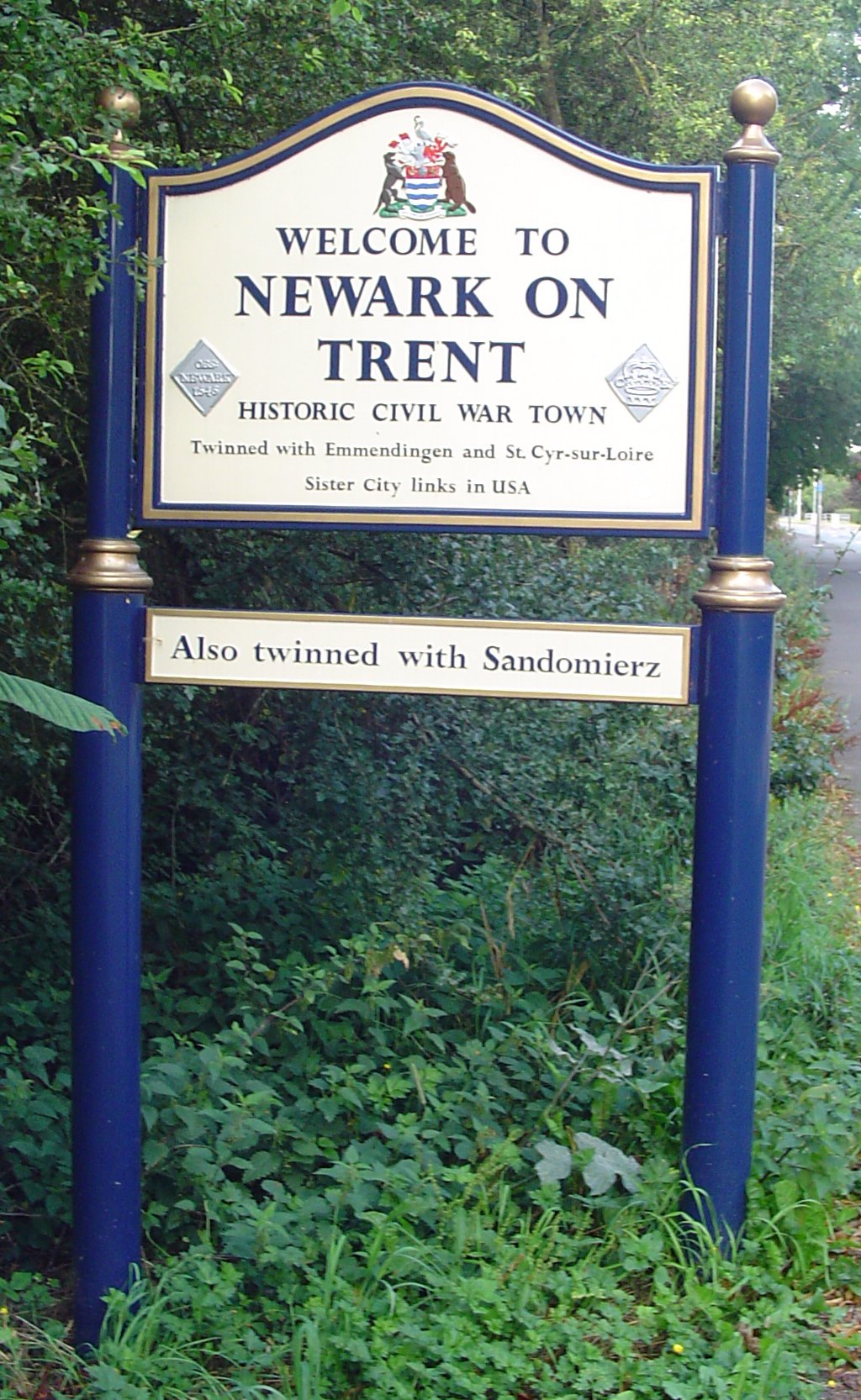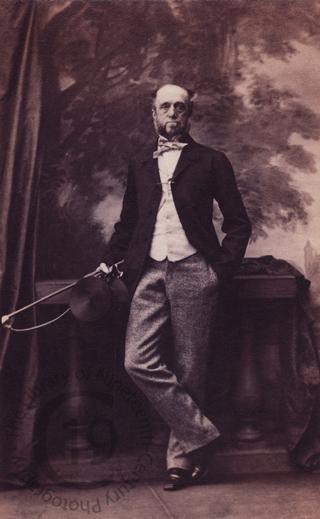|
Norton And Cuckney
Norton and Cuckney is a civil parish in the Bassetlaw district, within the county of Nottinghamshire, England. The overall area had a population of 351 at the 2011 census. The parish lies in the north west of the county, and south west within the district. The parish lies close to the county border with Derbyshire. It is 125 miles north west of London, 20 miles north of the city of Nottingham, and 5 miles north of the market town of Mansfield. The area is bordering Sherwood Forest and has associations with mining interests and the Welbeck Estate. Toponymy Cuckney was Cuchenai at the time of Domesday, and is possibly derived from the Old English for "The fast running stream, or brook" which is nearby. Norton was "The north town, or habitation" or "North farm", considering it lay above Cuckney. The previously independent parishes were merged in April 2015. Geography Location The parish lies along the north east boundary of the Nottinghamshire and by the Lincolnshire border ... [...More Info...] [...Related Items...] OR: [Wikipedia] [Google] [Baidu] |
Norton, Nottinghamshire
Norton is a village and former civil parish, now in the parish of Norton and Cuckney, in the Bassetlaw district, in the county of Nottinghamshire, England. It is just north of Cuckney, and is home to a number of farmsteads. Lying within the original extent of Sherwood Forest, and on its present edge, and lying within the Welbeck Abbey Estate. The civil parish was merged with Cuckney to form Norton and Cuckney. It is located not that far from the county's border with Derbyshire Derbyshire ( ) is a ceremonial county in the East Midlands, England. It includes much of the Peak District National Park, the southern end of the Pennine range of hills and part of the National Forest. It borders Greater Manchester to the no .... References Villages in Nottinghamshire Former civil parishes in Nottinghamshire Bassetlaw District Sherwood Forest {{Nottinghamshire-geo-stub ... [...More Info...] [...Related Items...] OR: [Wikipedia] [Google] [Baidu] |
Worksop
Worksop ( ) is a market town in the Bassetlaw District in Nottinghamshire, England. It is located east-south-east of Sheffield, close to Nottinghamshire's borders with South Yorkshire and Derbyshire, on the River Ryton and not far from the northern edge of Sherwood Forest. Other nearby towns include Chesterfield, Doncaster, Retford, Gainsborough and Mansfield. Worksop had a population of 41,820 as of the 2011 Census and it is twinned with the German town Garbsen. History Anglo-Saxon and Anglo-Norman history Worksop was part of what was called Bernetseatte (burnt lands) in Anglo-Saxon times. The name Worksop is likely of Anglo Saxon origin, deriving from a personal name 'We(o)rc' plus the Anglo-Saxon placename element 'hop' (valley). The first element is interesting because while the masculine name Weorc is unrecorded, the feminine name Werca (Verca) is found in Bede's ''Life of St Cuthbert''. A number of other recorded place names contain this same personal nam ... [...More Info...] [...Related Items...] OR: [Wikipedia] [Google] [Baidu] |
Newark-on-Trent
Newark-on-Trent or Newark () is a market town and civil parish in the Newark and Sherwood district in Nottinghamshire, England. It is on the River Trent, and was historically a major inland port. The A1 road bypasses the town on the line of the ancient Great North Road. The town's origins are likely to be Roman, as it lies on a major Roman road, the Fosse Way. It grew up round Newark Castle and as a centre for the wool and cloth trades. In the English Civil War, it was besieged by Parliamentary forces and relieved by Royalist forces under Prince Rupert. Newark has a market place lined with many historical buildings and one of its most notable landmark is St Mary Magdalene church with its towering spire at high and the highest structure in the town. The church is the tallest church in Nottinghamshire and can be seen when entering Newark or bypassing it. History Early history The place-name Newark is first attested in the cartulary of Eynsham Abbey in Oxfordshire, wh ... [...More Info...] [...Related Items...] OR: [Wikipedia] [Google] [Baidu] |
Ollerton
Ollerton is a town in the Newark and Sherwood District, Nottinghamshire, England, on the edge of Sherwood Forest in the area known as the Dukeries. It forms part of the civil parish of Ollerton and Boughton. OS Explorer Map 270: Sherwood Forest: (1:25 000): The population of this civil parish at the 2011 census was 9,840. History Ollerton is a settlement listed in Domesday Book, located in the Bassetlaw Wapentake or hundred in the county of Nottinghamshire at a crossing of the River Maun. In 1086 it had a recorded population of 15 households, and is listed in the Domesday Book under two owners. Formerly a rural village with a tradition of hop-growing centred on the parish church of St Giles the settlement has its origins at a point where three main routes cross. The A614 linking Nottingham north through Sherwood Forest to Blyth, Nottinghamshire and on to the large minster town of Doncaster; the A6075 linking Mansfield with the ferry crossing of the River Trent at Dunh ... [...More Info...] [...Related Items...] OR: [Wikipedia] [Google] [Baidu] |
Sheffield
Sheffield is a city status in the United Kingdom, city in South Yorkshire, England, whose name derives from the River Sheaf which runs through it. The city serves as the administrative centre of the City of Sheffield. It is Historic counties of England, historically part of the West Riding of Yorkshire and some of its southern suburbs were transferred from Derbyshire to the city council. It is the largest settlement in South Yorkshire. The city is in the eastern foothills of the Pennines and the valleys of the River Don, Yorkshire, River Don with its four tributaries: the River Loxley, Loxley, the Porter Brook, the River Rivelin, Rivelin and the River Sheaf, Sheaf. Sixty-one per cent of Sheffield's entire area is green space and a third of the city lies within the Peak District national park. There are more than 250 parks, woodlands and gardens in the city, which is estimated to contain around 4.5 million trees. The city is south of Leeds, east of Manchester, and north ... [...More Info...] [...Related Items...] OR: [Wikipedia] [Google] [Baidu] |
Packhorse
A packhorse, pack horse, or sumpter refers to a horse, mule, donkey, or pony used to carry goods on its back, usually in sidebags or panniers. Typically packhorses are used to cross difficult terrain, where the absence of roads prevents the use of wheeled vehicles. Use of packhorses dates from the neolithic period to the present day. Today, westernized nations primarily use packhorses for recreational pursuits, but they are still an important part of everyday transportation of goods throughout much of the developing world and have some military uses in rugged regions. History Packhorses have been used since the earliest period of domestication of the horse. They were invaluable throughout antiquity, through the Middle Ages, and into modern times where roads are nonexistent or poorly maintained. Historic use in England Packhorses were heavily used to transport goods and minerals in England from medieval times until the construction of the first turnpike roads and canals in the ... [...More Info...] [...Related Items...] OR: [Wikipedia] [Google] [Baidu] |
A60 Road
The A60 is a road linking Loughborough in Leicestershire, England, with Doncaster in South Yorkshire, via Nottingham. It takes the following route: * ** Cotes ** Hoton ** Rempstone ** Costock ** ** [...More Info...] [...Related Items...] OR: [Wikipedia] [Google] [Baidu] |
Nether Langwith
Nether Langwith is a village and civil parish, in the Bassetlaw district of Nottinghamshire, England. It is located east of Chesterfield and south west of Worksop. Nether Langwith lies east of the adjoining village, Langwith, which is in the district of Bolsover, Derbyshire, England. It is 527 hectares in size and lies on the banks of the River Poulter. The population at the 2011 census was 526. The local church is St Luke of Whaley Thorns, which was built in 1879 by J.B Mitchell-Withers. Whaley Thorns lies just north of Nether Langwith and of Bolsover. In 1924 it became a separate parish, but before then it was joined with the parish of Bolsover, of which St Mary's was the local church. St Luke's was a daughter church of St Mary's, of which there were three other daughter churches, St Winifred's in New Bolsover, St Peter's in Stanfree, St Laurence's at Shuttlewood. Of all of the daughter parish's, St Luke's is the only one to remain open. The village has two public house ... [...More Info...] [...Related Items...] OR: [Wikipedia] [Google] [Baidu] |
Whaley Thorns
Whaley Thorns is a former colliery village in the Bolsover (district), Bolsover district of Derbyshire, England, close to the Nottinghamshire border. Whaley Thorns lies just north of Nether Langwith and Langwith, Derbyshire, Langwith, south-east of Creswell, Derbyshire, Creswell, and west of Cuckney. It is in the civil parish of Scarcliffe. The village takes its name from a dense wood, recorded on the first Ordnance Survey Maps. "Whaley" being Celtic languages, Celtic for water/spring, referring to both the local spring (hydrosphere), springs, just to the north, and the river Poulter which lies only to the south. And "Thorn" an Anglo-Saxon word, for wood. So the original meaning, may have been either "''Wood of the Springs''", or "''Wood above/between the water(s)''". In the Mid-nineteenth century, much of the wood was cut down, following the discovery of coal beneath it. Thanks to the nearby railway, the site soon grew into a colliery village. The village acquired both a fine ... [...More Info...] [...Related Items...] OR: [Wikipedia] [Google] [Baidu] |
Holbeck
Holbeck is an inner city area of Leeds, West Yorkshire, England. It begins on the southern edge of Leeds city centre and mainly lies in the LS11 postcode district. The M1 and M621 motorways used to end/begin in Holbeck. Now the M621 is the only motorway that passes through the area since the end of the M1 moved to Hook Moor near Aberford. Since large parts of Holbeck have been vacated in preparation for the regeneration of the area, the district has in large parts suffered from a population exodus. Holbeck had a population of 5,505 in 2011. The district currently falls within the Beeston and Holbeck ward of Leeds City Council. The Leeds and Liverpool Canal also runs through Holbeck. History Early history The Hol Beck is the name of a stream running from the south-west into the River Aire.Leodis Hol Beck [...More Info...] [...Related Items...] OR: [Wikipedia] [Google] [Baidu] |
Carburton
Carburton or Carberton is a small village on the west side of Clumber within the Bassetlaw district of Nottinghamshire, England. It is primarily rural and residential. The church of Saint Giles is an unusual shape and dates back to the early 12th century, parish records date back to the 1530s Carburton stands on the River Poulter, on the Ollerton Road and is very close to Clumber Park. It is surrounded by four major cities, those being Doncaster, Lincoln, Sheffield and Nottingham, which is around away. Whilst London is away via the M1. History In 1848 it was written that Carburton was part of the Hatfield division of the Bassetlaw wapentake north division of the county of Nottingham situated about SSE from Worksop. The township contained 193 inhabitants and 1,516 acres of land. The Duke of Portland was the sole owner and lord of the manor, however the Duke of Newcastle owned about 40 acres, which was inclosed in Clumber Park. In 1853 it was written that the chapelry ... [...More Info...] [...Related Items...] OR: [Wikipedia] [Google] [Baidu] |








